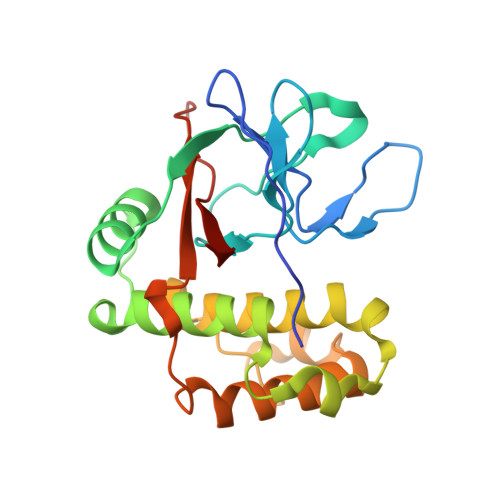An internal thioester in a pathogen surface protein mediates covalent host binding.
Walden, M., Edwards, J.M., Dziewulska, A.M., Bergmann, R., Saalbach, G., Kan, S.Y., Miller, O.K., Weckener, M., Jackson, R.J., Shirran, S.L., Botting, C.H., Florence, G.J., Rohde, M., Banfield, M.J., Schwarz-Linek, U.(2015) Elife 4
- PubMed: 26032562
- DOI: https://doi.org/10.7554/eLife.06638
- Primary Citation of Related Structures:
5A0D, 5A0G, 5A0L, 5A0N - PubMed Abstract:
To cause disease and persist in a host, pathogenic and commensal microbes must adhere to tissues. Colonization and infection depend on specific molecular interactions at the host-microbe interface that involve microbial surface proteins, or adhesins. To date, adhesins are only known to bind to host receptors non-covalently. Here we show that the streptococcal surface protein SfbI mediates covalent interaction with the host protein fibrinogen using an unusual internal thioester bond as a 'chemical harpoon'. This cross-linking reaction allows bacterial attachment to fibrin and SfbI binding to human cells in a model of inflammation. Thioester-containing domains are unexpectedly prevalent in Gram-positive bacteria, including many clinically relevant pathogens. Our findings support bacterial-encoded covalent binding as a new molecular principle in host-microbe interactions. This represents an as yet unexploited target to treat bacterial infection and may also offer novel opportunities for engineering beneficial interactions.
Organizational Affiliation:
Department of Biological Chemistry, John Innes Centre, Norwich, United Kingdom.
















